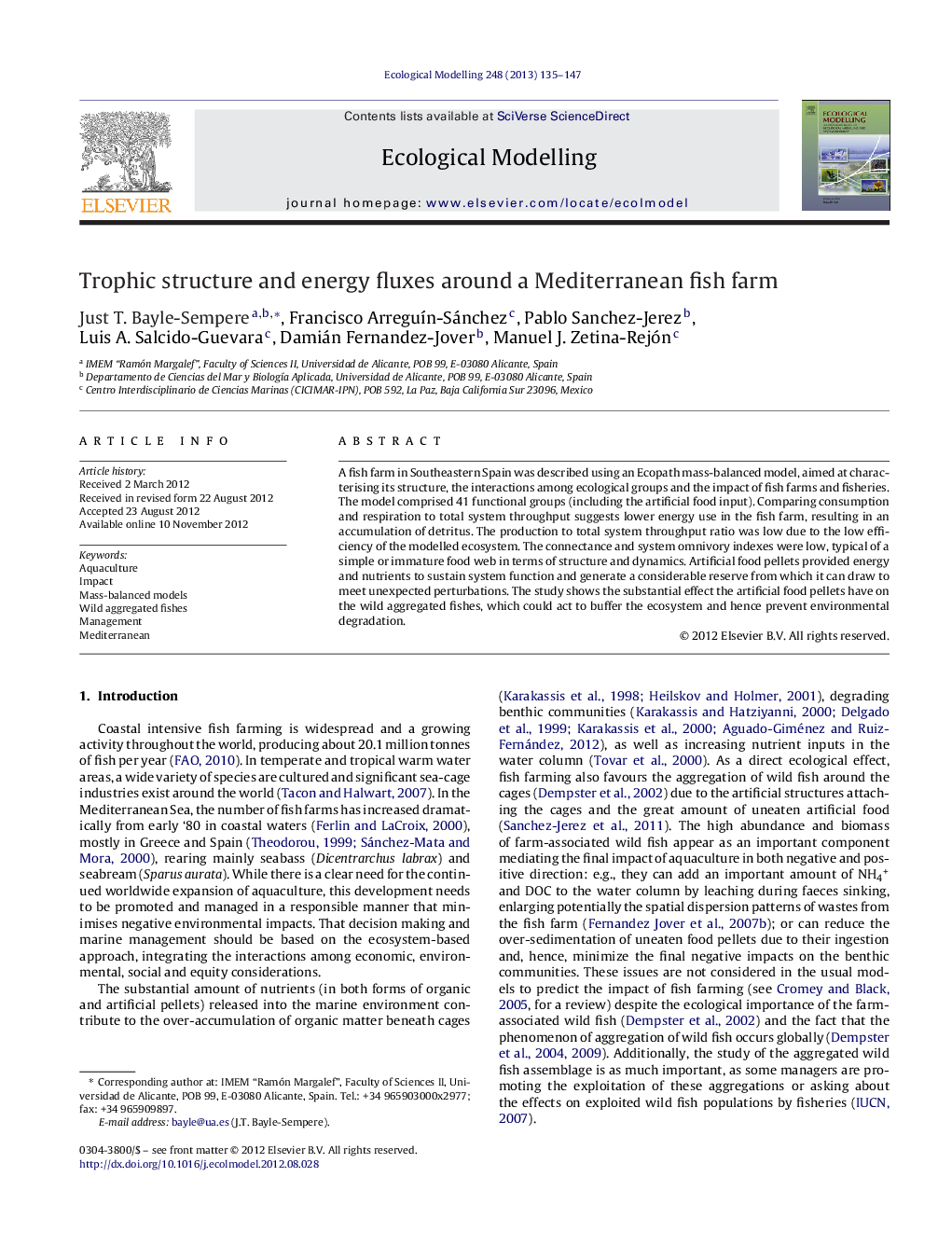| Article ID | Journal | Published Year | Pages | File Type |
|---|---|---|---|---|
| 4376361 | Ecological Modelling | 2013 | 13 Pages |
A fish farm in Southeastern Spain was described using an Ecopath mass-balanced model, aimed at characterising its structure, the interactions among ecological groups and the impact of fish farms and fisheries. The model comprised 41 functional groups (including the artificial food input). Comparing consumption and respiration to total system throughput suggests lower energy use in the fish farm, resulting in an accumulation of detritus. The production to total system throughput ratio was low due to the low efficiency of the modelled ecosystem. The connectance and system omnivory indexes were low, typical of a simple or immature food web in terms of structure and dynamics. Artificial food pellets provided energy and nutrients to sustain system function and generate a considerable reserve from which it can draw to meet unexpected perturbations. The study shows the substantial effect the artificial food pellets have on the wild aggregated fishes, which could act to buffer the ecosystem and hence prevent environmental degradation.
► We model a fish farm trophic structure by means of a mass-balance model. ► Wild aggregated fishes mediate positively the final impact of fish farming. ► The connectance and system omnivory define an immature ecosystem. ► The artificial food pellets provide resources enough to meet future perturbations. ► The system was heavily forced sustained by high input of artificial food pellets.
